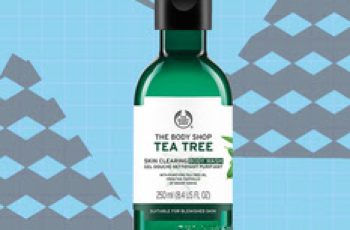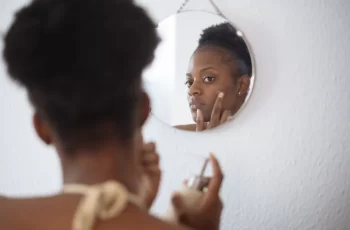
What type of face cleanser is best for you?
Many of us believe that our day doesn’t begin until we wash our face. This first step in your skincare routine is so important that it paves the way for the products that follow. There are different opinions on when you should use a face cleanser and what ingredients you should use, but every beauty expert will recommend making sure you use the right cleanser for your skin type.
Don’t worry, it’s not as confusing as it sounds, and we’ll give you some tips and advice on how to find the right cleanser for you, kind of like a skincare matchmaker!
What does a face cleanser do?
A face cleanser’s job is to remove anything that could cause harm from your skin. Pollution, harmful bacteria, excess oil, makeup residue, and dead skin cells are all free radicals that, if left on your face, can cause acne, redness, and even signs of premature aging. Face cleansers should not be confused with makeup removers, and are not usually used to remove makeup like foundation and mascara. In order for a face cleanser to do its full job, it’s best to remove your makeup first. Otherwise, you’ll be putting product on your skin and preventing it from getting clean. This can lead to skin issues like rashes and uneven texture.
You can’t stop these harmful particles from accumulating on your skin, which is why it’s so important to wash them off at the end of each day. You can also use a face cleanser in the morning, although some experts disagree on the ideal frequency for cleansing your skin. Half believe there’s no real benefit to washing your face in the morning, and that the focus should be primarily at night, as your skin is exposed to a host of environmental aggressors and stressors throughout the day. The other half believe washing twice a day is best for your skin.
If you want to learn more, check out our blog post on how often you should wash your face and why?
Does it matter if I don’t use a face cleanser?
In a word: yes. With the wide variety of face cleansers on the market in recent years, there’s no reason not to wash your face or to use only water.
The skin has a 30-day cell cycle, which means it undergoes cell turnover and sheds layers of dead skin cells. This cycle can sometimes be disrupted, so a buildup of dead skin cells can lead to breakouts and a dull complexion, and create a barrier for treatment products like serums and moisturizers to penetrate the underlying layers of the skin. By washing your face, you’re releasing trapped dirt, debris, and bacteria while removing dead skin cells and other skin-damaging free radicals.
Which face wash works best?
As with all products, it’s best to use a formula that works for your skin type. Here are some examples of what ingredients you should look for in a face cleanser to suit your skin type and what texture you should choose:
Modern Skin Type
For dull skin types, the best face cleansers are those with chemical exfoliants, such as popular AHAs like: B. Glycolic Acid and Vitamin C. Both ingredients will give your skin a glow and remove any barriers that prevent other topical treatments from penetrating deeper into the skin.
Choose products with AHAs like glycolic acid and Vitamin C for a refreshed, radiant complexion
All types of face cleansers are suitable for dull skin, such as milks, lotions, balms, and gels
Don’t forget to apply a treatment serum after cleansing to maintain your glow
You can use a face cleanser morning and night, but follow up with a moisturizer
Dry Skin Type
While face cleansers are a good starting point for your skin care routine, they can be very drying if you’re not careful. For dry skin, you need a wash that not only removes flaky patches and dead skin cells, but also gently cleanses the skin. AHA lactic acid is great for dry skin because it gently exfoliates while locking in moisture. Also look for a non-foaming formula, as this can also dry out the skin. It’s best to use a face cleanser at night after removing your daytime makeup. That way your skin will be cleansed without feeling too harsh.
Choose a formula with lactic acid, as it gently exfoliates and locks in moisture.
Face cleansers that contain milk, lotions, and creams are best for dry skin.
Use a face cleanser at night to prevent dry skin.
Oily Skin Types
Although some say that face cleansers don’t stay on your face long enough to have a big impact on your skin, it’s still a good idea to pay attention to your skin type and what it needs to look and feel healthy. If your skin is oily or prone to blemishes, choose an oil-free face cleanser to avoid excess oil that can cause your skin to become unbalanced. Ideally, you should use a face cleanser twice a day, but not too often, and only if it’s not too harsh or drying on your skin. Let the cleanser’s ingredients do all the work. Salicylic acid penetrates the deepest layers of the skin, which can open clogged pores and remove dead skin cells.
Face cleansers can be used twice a day, but not too often, as this can strip the skin of oils, leading to more oil production and breakouts.
Ingredients like salicylic acid can deep cleanse the skin.
Choose an oil-free gel formula to keep your skin happy.
If you want to create an effective skincare routine, it’s important to focus on the ingredients and texture of your face cleanser, as well as understanding your skin type to ensure you find a product that’s right for you. How much you should spend on a face cleanser depends on your personal budget. However, many beauty insiders believe that as long as the product works and delivers results, it’s good value for money, regardless of whether it costs £6 or £67.
What happens if I use a face cleanser that’s not suitable for my skin type?
Don’t worry, it’s not as dramatic as it sounds. Dry skin feels tight and uncomfortable, dull skin fails to improve its complexion, and oily skin has to deal with excess oil and shine. These are all small signs that you’re not using the right products, and they can be easily fixed. If you notice redness, rashes, itching or blistering on your skin, you must stop using the product immediately and seek advice from your GP or dermatologist.
So here’s more information on how to find the right face wash for your skin. If you still want to know more about the ingredients, check out our blog post on everything you need to know about AHAs and BHAs.


